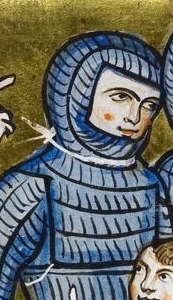Posts: 1,757 Location: Storvreta, Sweden
Tue 13 Nov, 2012 6:07 am
Here is a pdf of a report (in Swedish) about the metallography of the Tofta coif:
www.arkeologiuv.se/cms/showdocument/documents...22_gal.pdf
Google-translated snippets from the text:
"The three rings from the ring fabric which have been analyzed are of two different types,
two are complete rings and one is a riveted ring. All three have oval cross sections.
They have all been analyzed in different directions as well as metallographically
chemically. The iron is in all rings mainly ferritic, ie. carbonless
iron. The ferritic iron is much softer than a carbon steel. In the
both the rings, and the rivet, has a phosphorus content was observed.
Phosphorus present in concentrations about 0.15 to 0.20 weight percent. The riveted
ring missing phosphorus, or occur only sporadically in the lower level.
Phosphorus affects iron material properties by increasing its hardness
slightly, but mainly increases its toughness. The latter has often been
coveted feature for wire drawing."
"The results from this study of two different ring types from
ring fabric from Tofta is that the rings are made of a
phosphorus-iron rings which probably has been punched out of a sheet. the riveted
ring shows no clear signs of being manufactured by punching
or from a wire even if the latter is likely. longitudinal
manufacturing traces, which is typical of drawn wire, emerged (according to
from the client) during the conservation process, which confirms
adoption of manufacturing technology. This ring also differs in terms of
composition because it lacks phosphorus, a substance which, however,
present in the spent rivet."
I will edit in more text when I get time to do so.
I also have an essay on this coif by Tommy Hellman who made an analysis of the coif, its pattern and rings but at the moment of writing I am not sure where I have this text. If I find it I shall post further info.

